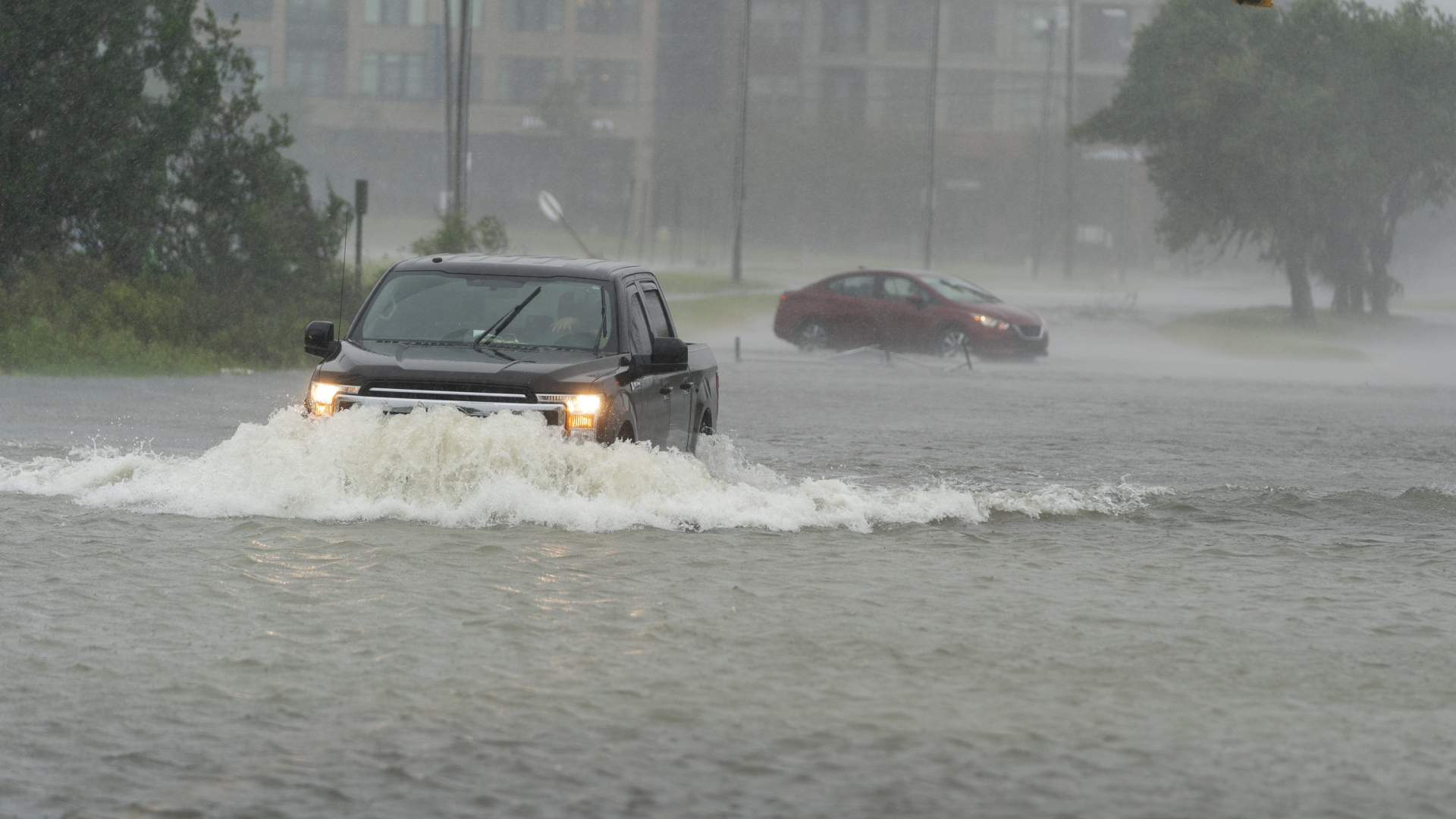Status: 09/30/2022 10:00 pm
Storm Ian made landfall again with heavy rains in the US state of South Carolina. Meteorologists are warning that parts of historic Charleston are under water.
Hurricane Ian has made landfall in the US again with winds of 140 kilometers per hour. The storm hit the South Carolina coast near Georgetown. Meteorologists have warned of flooding and storm surges of a good two metres.
Parts of the peninsula in the center of historic downtown Charleston were under water before “Ian” arrived. A state of emergency was declared in advance to allow federal authorities to support relief and recovery efforts in South Carolina.
The National Hurricane Center also warned of rain and flooding for neighboring North Carolina and southern Virginia.
This satellite image shows Hurricane Ian off the East Coast of the United States.
Image: A.P
At least 21 people have died in Florida
The second highest Category 4 hurricane has already shown its destructive power in the state of Florida. There, “Ian” had sustained winds of 240 kilometers per hour. The cyclone caused extensive damage.
Florida Governor Ron DeSantis says nearly two million homes are still without power. Electricity was completely cut off in several districts. Thousands of people took shelter in emergency shelters. Florida officials now estimate at least 21 people have died from the storm. However, Kevin Guthrie, director of the Florida Emergency Management Commission, emphasized that there is still no clarity on these numbers.
There are many dangers in water
In Key Largo, one of the islands in the Florida Keys chain in the state’s south, the water is so deep in the streets that alligators are swimming in them, the Miami Herald newspaper reported. Officials warned residents of flooded areas about: pollution from the sewage system, chemicals or alligators.
US President Joe Biden expressed grave fears on Thursday: “This could be the worst hurricane in Florida history.”
There is no electricity in Cuba
Three days after the hurricane passed, large parts of Cuba were still without power. State-owned electricity supplier UNE said a “shortage of power generation capacity” was expected to last throughout the day. It was not released how many people are without power.
More rain due to climate change?
Climate change has increased Hurricane Ian’s rainfall by more than 10 percent, according to a quick analysis by US scientists. “Climate change didn’t cause the storm, but it made it wetter,” said Michael Wehner, a researcher at the Lawrence Berkeley National Laboratory. These are “conservative estimates”.
The investigation is an initial rapid analysis. There is still no peer review process where studies are reviewed by impartial experts. Wehner and his colleagues compared simulations of Earth’s climate today with simulations that have already factored in nearly 1.2 degrees of global warming since pre-industrial times.

“Amateur coffee fan. Travel guru. Subtly charming zombie maven. Incurable reader. Web fanatic.”








More Stories
Nicolas Loufrani: Young Londoners Design Afro Hair Emojis
US Election: Trump Vs. Harris – 2024 poll numbers in America
Börse Express – USA: Retail sales rise unexpectedly